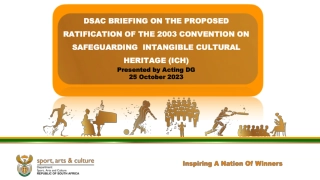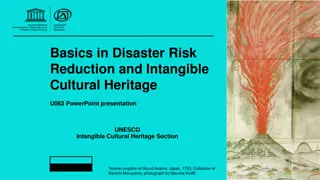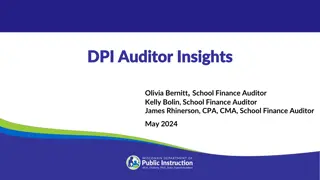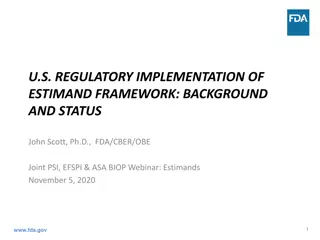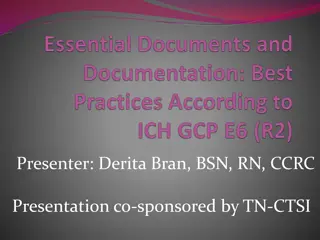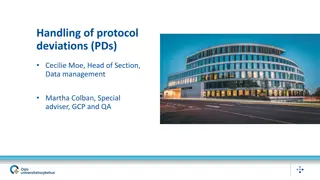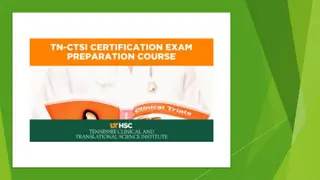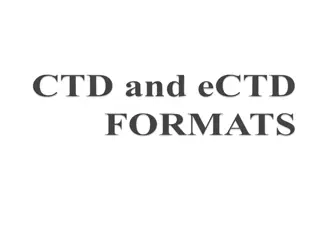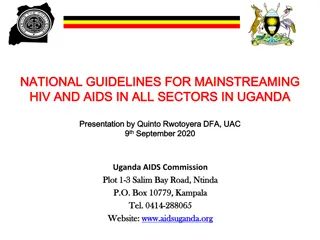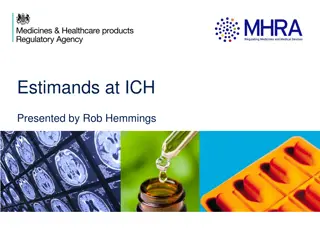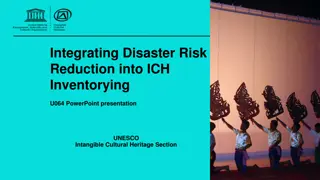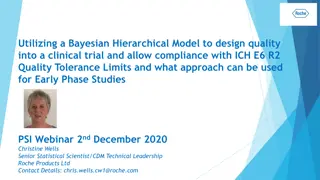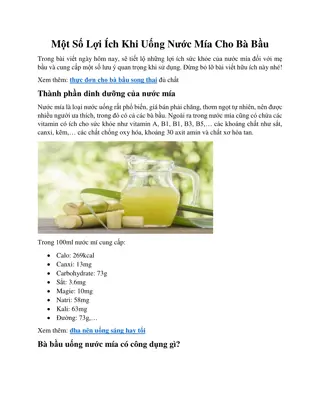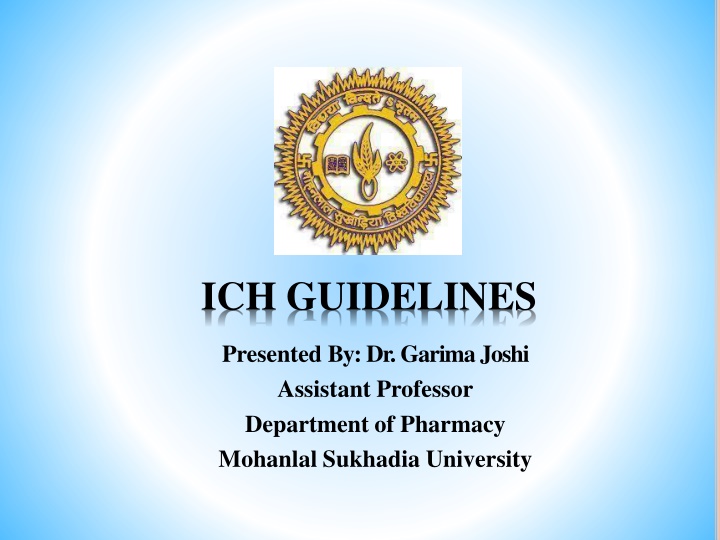
ICH Guidelines for Pharmaceutical Registration
Explore the International Conference on Harmonisation (ICH) guidelines presented by Dr. Garima Joshi, Assistant Professor at Mohanlal Sukhadia University. Learn about the objectives, organization, and key steps in the process for harmonizing technical requirements for pharmaceutical registration in Europe, Japan, and the United States.
Download Presentation

Please find below an Image/Link to download the presentation.
The content on the website is provided AS IS for your information and personal use only. It may not be sold, licensed, or shared on other websites without obtaining consent from the author. If you encounter any issues during the download, it is possible that the publisher has removed the file from their server.
You are allowed to download the files provided on this website for personal or commercial use, subject to the condition that they are used lawfully. All files are the property of their respective owners.
The content on the website is provided AS IS for your information and personal use only. It may not be sold, licensed, or shared on other websites without obtaining consent from the author.
E N D
Presentation Transcript
ICH GUIDELINES Presented By: Dr. Garima Joshi Assistant Professor Department of Pharmacy Mohanlal Sukhadia University 1
INTRODUCTION The International Conference on Harmonisation of Technical Requirements for Registration of Pharmaceuticals for Human Use (ICH) is a unique project that brings together the regulatory authorities of Europe, Japan and the United States and experts from the pharmaceutical industry in the three regions to discuss scientific and technical aspects of product registration.
AIM The International Conference on Harmonisation of Technical Requirements for the Registration of Pharmaceuticals for Human Use (ICH) was established in 1990 as a joint regulatory/industry project to improve, through harmonisation, the efficiency of the process for developing and registering new medicinal products in Europe, Japan and the United States, in order to make these products available to patients with a minimum of delay. The six parties to ICH represent the regulatory bodies and research- based industry in the three regions, Europe, Japan and the USA, where the vast majority of new medicines are currently developed
ICH ORGANISATION European Commission - European Union (EU). European Federation of Pharmaceutical Industries and Associations (EFPIA). Ministry of Health, Labour and Welfare, Japan (MHLW). Japan Pharmaceutical Manufacturers Association(JPMA). US Food and Drug Administration(FDA). Pharmaceutical Research and Manufacturers of America(PhRMA).
OBECTIVES More economical use of human, animal, and material resources. Elimination of unnecessary delay in the global development & availability of new medicines. Maintaining safeguards on Quality, safety, efficacy and regulatory obligations to protect public health. Target: Target for the first phase of ICH activities was to remove redundancy and duplication in the development and review process, such that a single set of data could be generated to demonstrate the quality, safety and efficacy of a new medicinal product.
The Five Steps in the ICH Process for Harmonization Step 1: Implementation in the three ICH regions Follow Good Guidance Practice Step 2: Agreement on a harmonized ICH guideline; adopted by regulators Step 3: Regulatory consultation in the three regions. Consolidation of the comments Step 4: Agreement by the Steering Committee to release the draft consensus text for wider consultation Step 5: Building scientific consensus in joint regulatory/industry expert working
TOPIC OFICH Four Broad Categories - QSEM Quality (Q): those relating to chemical and pharmaceutical Quality Assurance (Stability Testing, Impurity Testing,etc.) Safety (S): those relating to in vitro and in vivo pre-clinical studies (Carcinogenicity Testing, Genotoxicity Testing,etc.) Efficacy (E): those relating to clinical studies in human subject (Dose Response Studies, Good Clinical Practices, etc.) Multidisciplinary (M): cross-cutting Topics which do not fit uniquely into one of the above categories (MedDRA, ESTRI, M3, CTD, M5)
ICH Guidelines Over 70 Efficacy 19 topics/ 24 guidelines Safety - 11 topics/15 guidelines Quality - 12 topics/27 guidelines Medical Dictionary - MedDRA Electronic Standards - ESTRI, E2B Common Technical Document - CTD Guidelines extend over entire product life cycle
OVERVIEW OFICH 1- Quality Q1A(R2): STABILITY TESTING OF NEW DRUGS AND PRODUCTS Q1B: PHOTOSTABILITYTESTING Q1C : STABILITYTESTING OF NEW DOSAGE FORMS Q1D: BRACKETING AND MATRIXING DESIGNS FOR STABILITY TESTING OF DRUG SUBSTANCES AND DRUG PRODUCTS.
CONTI Q1E: EVALUATION OF STABILITY DATA Q1F: STABILITY DA TA PACKAGE FOR REGISTRA TION IN CLIMATIC ZONES III AND IV Q2A: DEFINTIONS AND TERMINOLOGY: ANALYTICAL VALIDATION Q2B: METHODOLOGY Q3A(R2) : IMPURITIES IN NEW DRUG SUBSTANCES Q3B(R2) : IMPURITIES IN NEW DRUG PRODUCT Q3C(R3) : IMPURITIES GUIDELINES FOR RESIDUAL SOLVENTS
CONTI. Q4: PHARMACOPOEIA Q4A: PHARMACOPOEIALHARMONIZATION Q5A: VIRAL SAFETYEVALUATION Q5B: GENETIC STABILITY Q5C: STABILITY OF BIOTECHNOLOGYPRODUCTS Q5D: CELLSUBSTRATES
CONTI Q6A: SPECIFICA TIONS, TEST PROCEDURES AND ACCEPTANCE CRITERIAFOR NEW DRUG SUBSTANCESANDPRODUCTS Q6B : SPECIFICATION TEST PROCEDURE AND ACCEPTANCE CRITRIA FOR BIOTECHNOLOGICAL/ BIOLOGICAL PRODUCTS Q7A: GMP FORACTIVE PHARMACEUTICALINGREDIENTS Q8: PHARMACEUTICALDEVELOPMENT Q9: QUALITY RISK MANAGEMENT Q10: PHARMACEUTICALQUALITYSYSTEM
2-SAFETY S1A: GUIDELINE ON THE NEED FOR CARCINOGENICITY STUDIES OF PHARMACEUTICALS S1B: TESTING FOR CARCINOGENICITY OF PHARMACEUTICALS S1C(R2):DOSE SELECTIONFOR CARCINOGENICITY STUDIES OF PHARMACEUTICALS S2(R1): GUIDANCE ON GENOTOXICITY TESTING AND DA TA INTERPRETATION FOR PHARMACEUTICALS INTENDED FOR HUMAN USE
CONTI S3A: NOTE FOR GUIDANCE ON TOXICOKINETICS: THE ASSESSMENT OF SYSTEMIC EXPOSURE IN TOXICITYSTUDIES S3B: PHARMACOKINETICS:GUIDANCE FOR REPEATED DOSE TISSUE DISTRIBUTION STUDIES S4: DURATION OF CHRONIC TOXICITY TESTING ANIMALS (RODENT AND NON RODENT TOXICITY TESTING) S5(R2): DETECTION OF TOXICITY TO REPRODUCTION FOR MEDICINAL PRODUCTS & TOXICITY TO MALE FERTILITY S6(R1): ADDENDUM TO ICH S6: PRECLINICAL SAFETY EVALUATION OF BIOTECHNOLOGY-DERIVED 14 PHARMACEUTICALS
S6: PRECLINICAL SAFETY EVALUATION OF BIOTECHNOLOGY- DERIVED PHARMACEUTICALS S7A: SAFETY PHARMACOLOGY STUDIES FOR HUMAN PHARMACEUTICALS S7B: THE NON-CLINICAL EVALUATION OF THE POTENTIAL FOR DELAYED VENTRICULAR REPOLARIZATION (QT INTERVAL PROLONGATION) BY HUMAN PHARMACEUTICALS S8: IMMUNOTOXICITY STUDIES FOR HUMAN PHARMACEUTICALS S9: NONCLINICAL EVALUATION FOR ANTICANCER PHARMACEUTICALS
3) EFFICACY: E1: THE EXTENT OF POPULATION EXPOSURE TO ASSESS CLINICAL SAFETY E2A: CLINICALSAFETYDATAMANAGEMENT E2B(R2): MAINTENANCE OF THE ICH GUIDELINE ON CLINICAL SAFETY DATAMANAGEMENT E2B(R3): REVISION OF THE ICH GUIDELINE ON CLINICAL SAFETY DATA MANAGEMENT DATA ELEMENTS FOR TRANSMISSION OF INDIVIDUAL CASE SAFETY REPORTS E2C(R1): CLINICAL SAFETY DATA MANAGEMENT: PERIODIC SAFETY UPDATE REPORTS FOR MARKETED DRUGS
E2D: POST-APPROVAL SAFETY DATA MANAGEMENT: DEFINITIONS AND STANDARDS FOR EXPEDITED REPORTING E2E: PHARMACOVIGILANCE PLANNING E2F: DEVELOPMENT SAFETY UPDATEREPORT E3: STRUCTURE AND CONTENT OF CLINICAL STUDYREPORTS E4: DOSE-RESPONSE INFORMATION TO SUPPORTDRUG REGISTRATION E5(R1): ETHNIC FACTORS IN THE ACCEPTABILITY OFFOREIGN CLINICALDATA E6(R1): GUIDELINE FOR GOOD CLINICALPRACTICE E7: STUDIES IN SUPPORT OF SPECIALPOPULATIONS:GERIATRICS
E8: GENERAL CONSIDERATIONS FOR CLINICALTRIALS E9: STATISTICAL PRINCIPLES FOR CLINICALTRIALS E10: CHOICE OF CONTROL GROUP AND RELATED ISSUES IN CLINICAL TRIALS E11: CLINICAL INVESTIGATION OF MEDICINAL PRODUCTS IN THE PEDIATRIC POPULATION E12: PRINCIPLES FOR CLINICAL EVALUATION OF NEW ANTIHYPERTENSIVE DRUGS E14: THE CLINICAL EVALUATION OF QT/QTC INTERVAL PROLONGATION AND PROARRHYTHMIC POTENTIAL FOR NON-ANTIARRHYTHMIC DRUGS E15: DEFINITIONS FOR GENOMIC BIOMARKERS, PHARMACOGENOMICS, PHARMACOGENETICS, GENOMIC DATA AND SAMPLE CODING CATEGORIES E16: GENOMIC BIOMARKERS RELATED TO DRUG RESPONSE:
MULTIDISCIPLINARY GUIDELINES M1- MedDRA: MedicalTerminology M2- ESTRI: Electronic Standards for the Transfer of Regulatory Information M3- (R2): Nonclinical Safety Studies for the Conduct of Human Clinical Trials and Marketing Authorization for Pharmaceuticals M4- CTD: The Common Technical Document M5 : Data Elements and Standards for Drug Dictionaries
CTD FORMAT ICH Requirements The CTD is not a GlobalDossier ! It is an agreed-upon common format for the modular presentation of summaries, reports and data Incorporates relevant ICH guidelines It is organized into five sections: All modules harmonized except Module 1 regional specific Raw data per regional requirements
CTD Structure Full dossier contains 5 Modules - - - Only Modules 2-5 are CTD Module 1 - region-specific but always included in complete CTD structure Module 2 - All summaries / overviews Module 3 - CMC ( Quality ) Module 4 - Preclinical Module 5 - Clinical
Module 2 - CTD Summaries 2.1 Overall CTD Table of Content 2.2 CTD Introduction 2.3 Quality Overall Summary 2.4 Non-Clinical Overview 2.5 Clinical Overview 2.6 Non-Clinical Written and Tabulated Summaries 2.7 Clinical Summary
Benefits of the CTD More reviewable applications Complete, well-organized submissions More predictable format More consistent reviews Easier analysis across applications Easier exchange of information Facilitates electronic submissions
Key Considerations for Dossier Preparation Be concise (to the point) High-level data summaries and conclusions Focus on key messages Focus on critical attributes and parameters Provide clear rationales Provide useful context Give the reviewers what they need to know to approve your product!
Conclusions CTD Summaries are key tools for agency review Summaries can be the basis for internal planning, review, and tracking Summaries should assess risk and provide scientific rationales CTD-ready documents enhance efficiency throughout development Meeting the reviewers needs will help you meet your own needs, i.e. approval!

